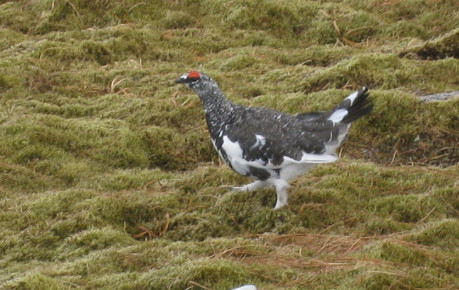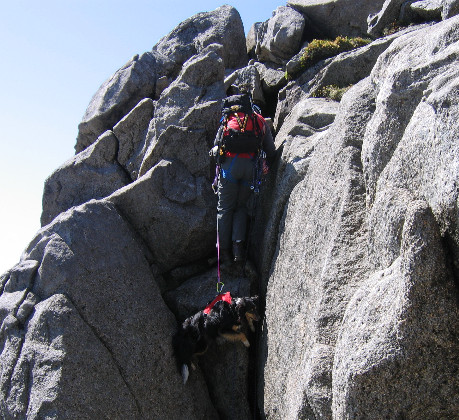Dogs must be trained to ignore livestock and wildlife.
You must have complete control over your dog and if it has a tendency to chase wildlife, birds or livestock it must remain on the lead at all times. Recall to a shout or whistle and a reliable stop command are a vital part of the dogs training as a hill companion.
Owners are responsible for ensuring their dog doesnít disturb native mountain wildlife, much of which is rare and/or threatened in UK terms. During the peak breeding season from April to July mountain ground-nesting birds such as dotterel and ptarmigan are particularly vulnerable to disturbance from dogs and many dogs canít fight their natural instinct to run amongst such birds or chase them. If this means that a bird is put off the nest, leaving eggs unattended, they could easily cool to such an extent that they fail to hatch, or could be predated, even by the dogs themselves. Similarly, young chicks canít fly and can easily be caught by a dog or separated from their mother, who offers warmth and protection.
If you're visiting a nature reserve or other conservation area you may be requested to follow a specific route or to avoid going to a specific area. Following local guidance can help to safeguard the nature and wildlife in these areas.
The Scottish Outdoor Access Code provides advice on dealing with livestock and ground nesting birds.
Remember to consider other people too. Not all people like dogs so it is important to ensure your dog is not overfriendly or likely to jump up at people.

Ptarmigan.
Cows and dogs do not mix. There have been numerous incidents where owners have been injured or killed by cows. Cows will be curious about dogs or become extremely protective of their calves and can perceive dogs as a threat. Cows may follow dogs and this can easily turn into a stampede. Cows perceive dogs as a much greater threat than humans so it is advisable not to take dogs anywhere near cows. But if this is unavoidable it is best to let the dog off the lead if you feel threatened or be ready to drop the lead if necessary, dogs will be able to run to safety a lot faster than their owners and will be able to outrun a herd of cows.
Dogs are blessed with a natural sense of balance and will negotiate steep ground, boulder fields, scree, narrow ridges and bogs with ease. However, just as humans need to learn how to walk over various types of terrain as they develop their hill skills, so do dogs.
A dog will naturally walk from A to B irrespective of the terrain in-between. Start off small and keep a close eye on your dog. Some are scared of descending steep terrain and may refuse to move, they will fall between rocks in boulder fields, struggle with scree and end up submerged in bogs.
But they learn quickly. The easiest and most straightforward method to training your dog is to use a lead and a harness with a handle and walk with your dog close beside you and lead it slowly over the terrain by the safest route. Very soon this will become second nature to them and they will soon be able to manage under their own steam.
A harness is also extremely useful when scrambling either to secure the dog to prevent them getting into difficulty or to lift them up or down steep sections.
Deer fences, stiles and dams can be problematical. If your dog is small or not too heavy it may be possible to lift them over fences but for larger dogs careful route planning is vital to ensure you are able to get your dog over or under. With a harness it is possible to train your dog to be assisted over a ladder stile and many have built in dog gates.

Abseiling on Arran. Photo by Anne Butler.